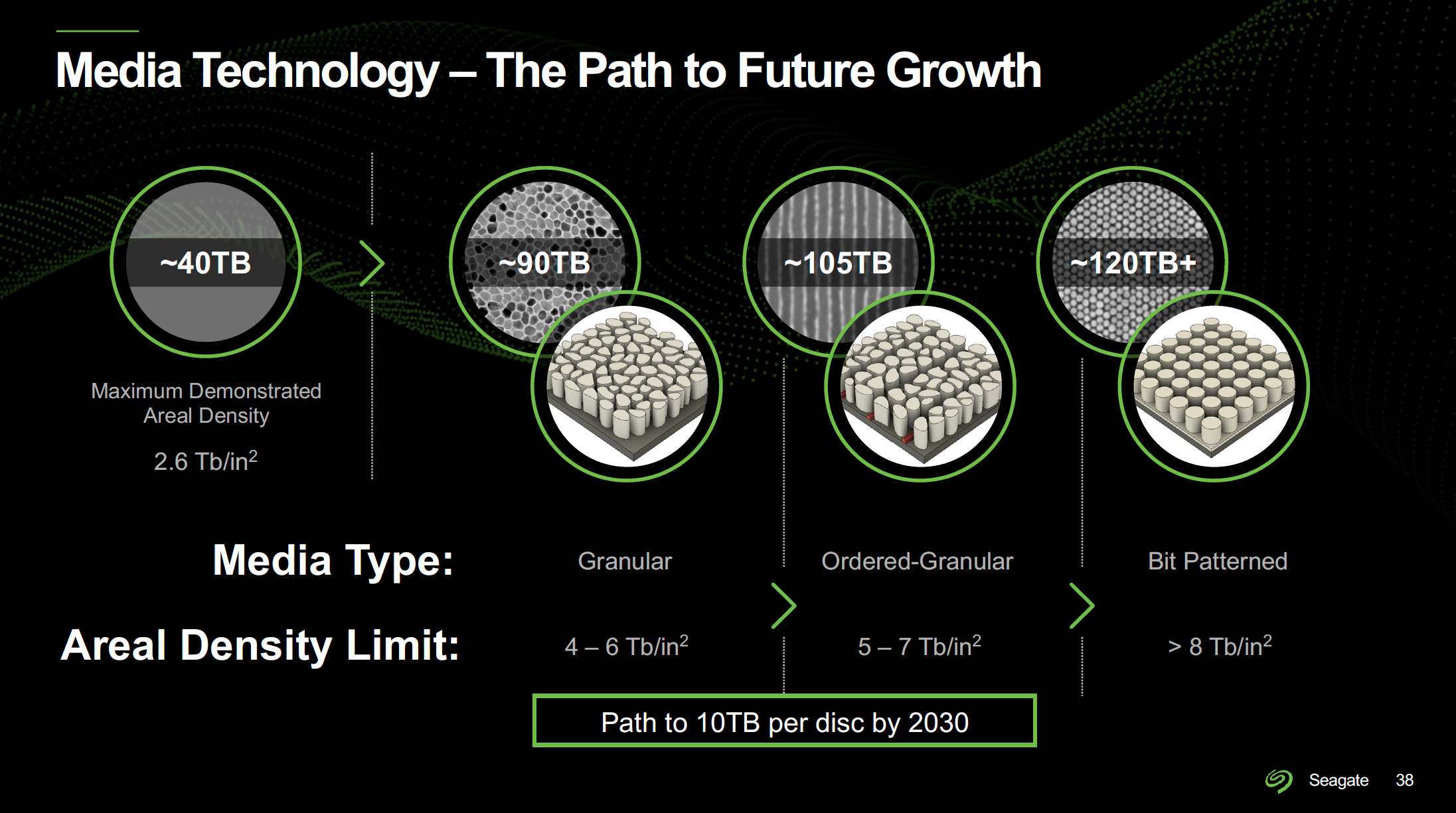Seagate demonstrates 3D magnetic recording for 120+ TB HDDs — dual-layer media stacks data bits to boost capacity
HDD storage stacks bits to boost capacity.

Heat-assisted magnetic recording (HAMR) technology promises to increase areal density and hard disk drive capacity by at least two times compared to standard perpendicular magnetic recording (PMR) technology. However, recently demonstrated dual-layer HDD media, which records data bits stacked atop each other in layers, coupled with multi-level heat-assisted recording, promises to at least double what current-generation HAMR technology is capable of. How about a 60 TB HDD now and well over 120 TB in 10 to 15 years?
Research teams from NIMS, Seagate Technology, and Tohoku University have demonstrated the feasibility of multi-level heat-assisted magnetic recording (HAMR) on dual-layer granular media, reports Acta Materialia.
The concept of multi-level magnetic recording for hard drives has been around for some time, but its practical application has been hindered by the absence of suitable media that can store data at various levels. Researchers have tackled this challenge by creating a new type of granular media composed of two FePt-C nanogranular films separated by a Ru-C spacer layer with a cubic crystal structure. This enables separate magnetic recording on each layer under different magnetic fields and temperatures.
By adjusting the laser power and magnetic fields during the writing process, the two FePT layers can be recorded independently, potentially doubling the areal density and HDD capacity without making significant changes in magnetic layer materials.
Regular HAMR-based HDDs use glass platters covered with a magnetic film, such as iron platinum alloy (FePt), that can be recorded when the film is heated with a laser to its Curie temperature (the temperature at which the film alters its magnetic properties) and its magnetic coercivity is lowered.
As the name suggests, dual-layer granular media has two film layers, each with different Curie temperatures and magnetocrystalline anisotropies. The researchers say that such media can enable recording densities of well over 10 Tbit/in^2, meaning 10-platter hard drives with well over 120 TB capacities.
The researchers claim that magnetic measurements and simulations of heat-assisted magnetic recording have indicated that HAMR media can support three-level recording and might even be capable of four-level recording.
Get Tom's Hardware's best news and in-depth reviews, straight to your inbox.
It should be noted that while the method is possible in the lab, it looks rather costly as it requires significantly different read/write heads and more complex platters with two (or more) layers of granular magnetic layers. Granular media, ordered granular media, and then bit patterned media promise to increase the areal density of HDD disks without such extreme complexities, so it is hard to imagine dual-layer and multi-layer media being used in the near future. Yet, once the industry gets to bit patterned media, it might look back and reconsider multi-layer media as a means to increase recording density and HDD capacity.

Anton Shilov is a contributing writer at Tom’s Hardware. Over the past couple of decades, he has covered everything from CPUs and GPUs to supercomputers and from modern process technologies and latest fab tools to high-tech industry trends.
-
PlutoDelic I wonder how throughput is being tackled with these. It looks like SATA will die before HDD's, as ironic as that sounds.Reply -
peachpuff Reply
They have... as boot drives.MacZ24 said:That's pretty useless since SSDs will replace HDDs before 2023. -
8086 Once upon a time, tape drives were the primary form of storage but once replaced they hung around for many decades as a backup form of bulk storage. The same will hold true for hard drives in the decades to come.Reply -
PEnns We've been hearing and reading countless news about those gigantic 50 to 100+ TB HDDs now for over 10 years now.....will this be any different?Reply -
Notton It'd be nice if NAND dropped to HDD levels of Price/GB, but that only happened against 2.5" HDDs in 2023 during NAND price crash.Reply -
jakovasaurs Reply
I think those Chinese-research discs mentioned recently aren't Read/Write (RW), so they will have limited use for consumers.Amdlova said:when they reach 100 tb will have optic disc with one peta byte
:) -
jasonf2 Reply
That isn't exactly true. There are a number of applications where rust drives still have significant advantages. Flash doesn't have great write tolerance. Its cost per terabyte is also more than spin drives. So for applications like video recording systems that have constant overwrite cycles and mid-low tier archival storage setups spin drives will remain viable for the foreseeable future. Those use cases have a huge need for capacity and that is why you are seeing a race in the spin drive market for bigger and bigger drives. The obvious latency and bandwidth differences between spin drives and SSD has all but removed them from the main tier storage market in PCs but they are still alive and kicking in the NAS, Server and Security markets.MacZ24 said:That's pretty useless since SSDs will replace HDDs before 2023.

